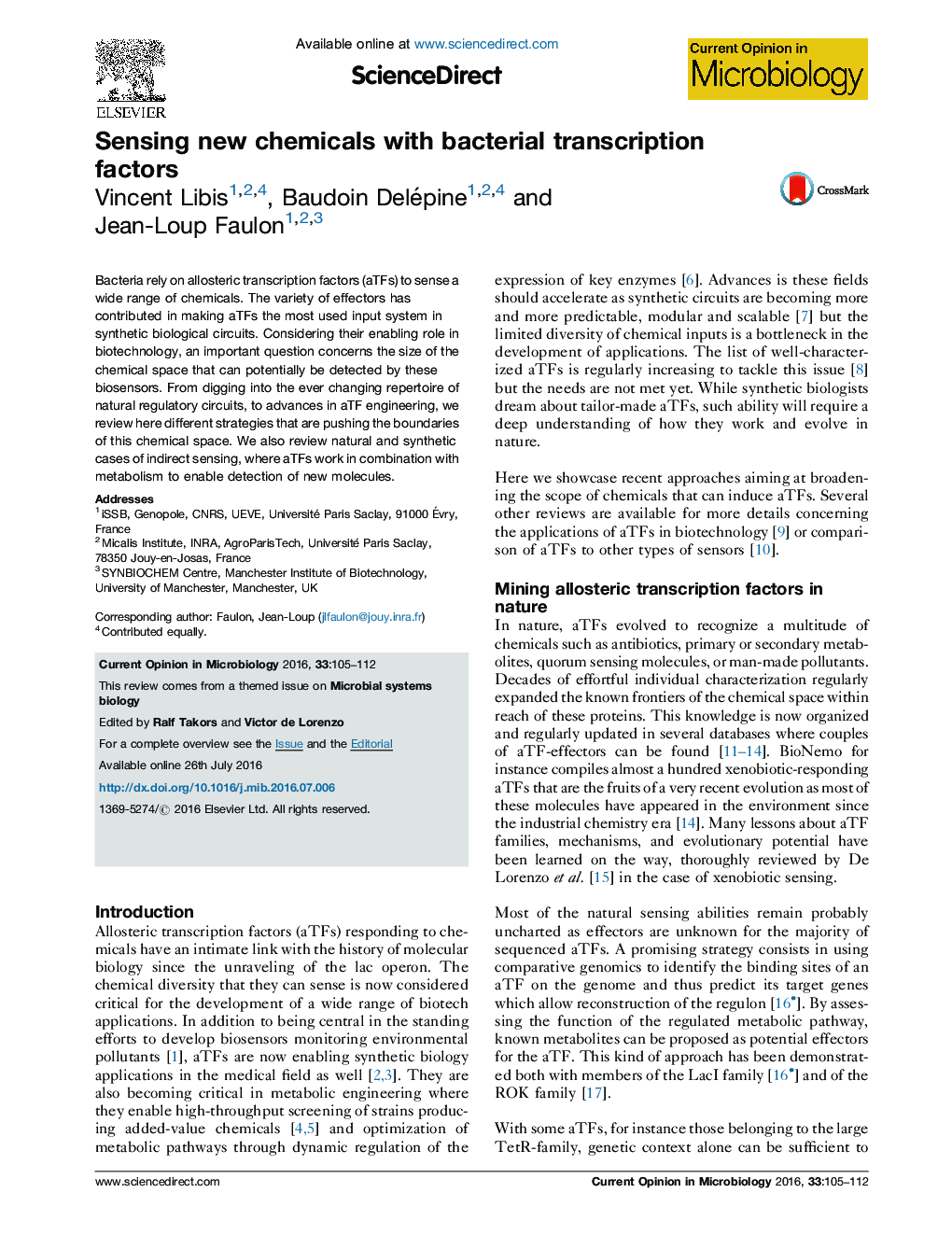| Article ID | Journal | Published Year | Pages | File Type |
|---|---|---|---|---|
| 6131512 | Current Opinion in Microbiology | 2016 | 8 Pages |
â¢Transcription Factors represent a starting material of choice to build new biosensors.â¢Evolution and rational design are making advances toward tailor-made TFs.â¢Metabolism indirectly expands the scope of chemicals that can be detected.
Bacteria rely on allosteric transcription factors (aTFs) to sense a wide range of chemicals. The variety of effectors has contributed in making aTFs the most used input system in synthetic biological circuits. Considering their enabling role in biotechnology, an important question concerns the size of the chemical space that can potentially be detected by these biosensors. From digging into the ever changing repertoire of natural regulatory circuits, to advances in aTF engineering, we review here different strategies that are pushing the boundaries of this chemical space. We also review natural and synthetic cases of indirect sensing, where aTFs work in combination with metabolism to enable detection of new molecules.
